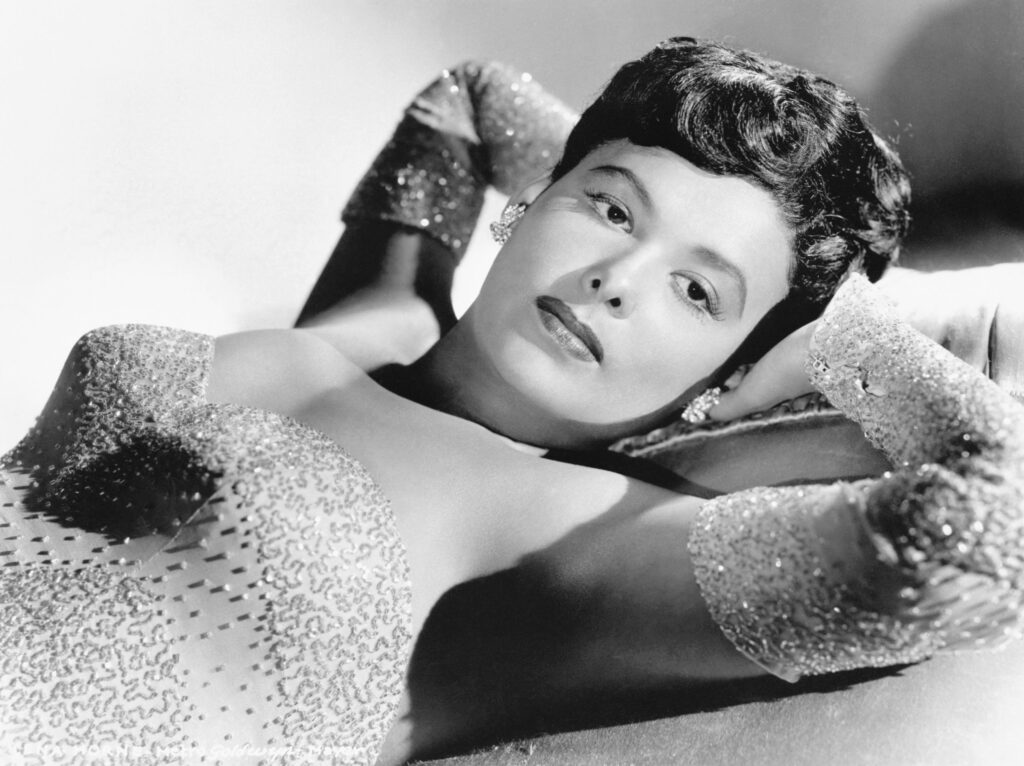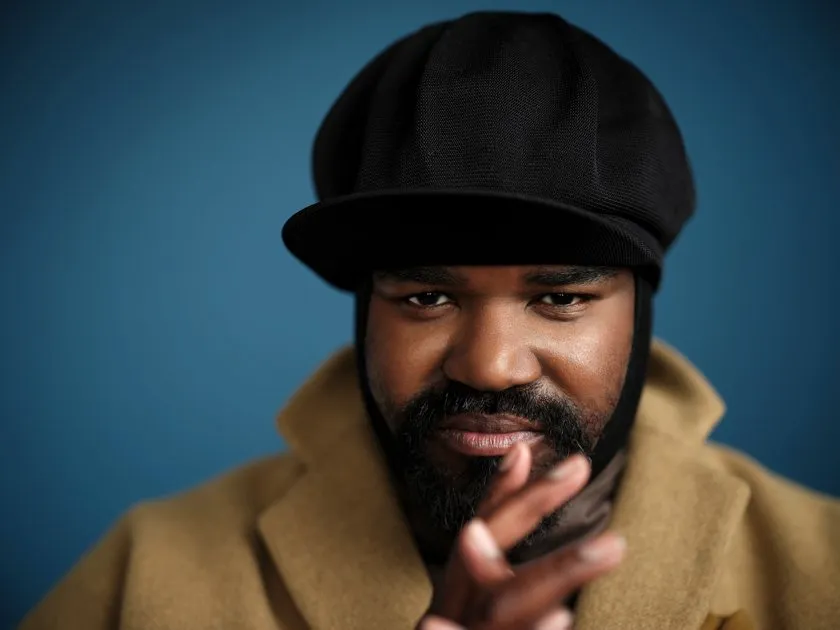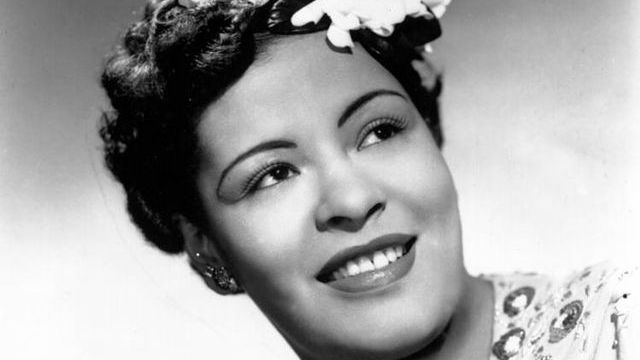WICN Artist of the Month, April ’24: Lionel Hampton
Written by Doug Hall on April 1, 2024
By Doug Hall, WICN Contributing Writer
As with standard jazz instruments, many players are responsible for popularizing them during different genre periods. For the vibraphone, there is no greater originator and virtuoso than Lionel Hampton. Hampton would become a pioneer in the use of the vibraphone as a soloist and later enjoy international fame as a bandleader. Introducing innovations and featuring this instrument, he successfully popularized its use – breaking the mold of the standard pre-conception of the Big Band leader on piano or horn.
With a gifted percussive ability and superb ear for music, as a teenager Hampton began drumming for several blues and jazz bands in the late 1920s, including the Dixieland Blues-Blowers and the Quality Serenaders, led by saxophonist and clarinetist Paul Howard. Hampton would then take an important step forward in recognition by joining Les Hite’s band, which would later back up Louis Armstrong in 1930.
Hampton’s frantic showmanship on drums (twirling and juggling his drumsticks and other dexterity stunts) came to the attention of Armstrong. Hampton was also practicing on the xylophone (a precursor to vibraphone), and in effect, introducing the instrument to early jazz. Armstrong found that Hampton could copy his trumpet solo on the xylophone and liked the arrangement possibilities, assigning him to play behind Armstrong’s trumpet during vocal choruses. Hampton recalled this moment in an interview, saying “Louis saw a set of vibes in the corner of the studio, and he asked me: did I know anything about the instrument? The drummer on the date was just playing a straight NBC kind of thing—but I had been practicing up with these orchestra bells and marimbas I had, and I could play jazz. So, Louis asked me to play some, and I started playing jazz, and he was carried away with it; I did the introduction on Memories of You.”
When legendary Big Band leader Benny Goodman came to Los Angeles in 1936 with a dynamic lineup of talent that included Gene Krupa on drums and Teddy Wilson on piano, Hampton was enthusiastically introduced by promoter John Hammond. After hearing Hampton perform, Goodman hired him immediately and thereby became part of the famed Benny Goodman Quartet. Together, this historically high-octane and innovative quartet produced some of Goodman’s jazz classics, including Dinah, Moonglow, My Last Affair, and Exactly Like You.
Hampton’s transition from Goodman’s quartet, which he left in 1940, toward establishing his own band occurred in coincidence with having married his wife, Gladys, in 1936. Gladys was considered a brilliant businesswoman who took over the management of his musical career after they were married. “Gladys served as his personal manager, and developed a reputation as a brilliant businesswoman. She was responsible for raising the money for Lionel to start his own band.”
With Hampton’s dazzling dexterity, virtuosity on the vibraphone, and his high energy, high voltage personality and performance style on stage, he was a natural bandleader and showman. Through the ‘40s and ‘50s, he enjoyed enormous international success, taking his band abroad to Europe, Asia, South America, and Africa. A natural self-promoter, Hampton was never shy to share his enthusiasm about live performances, “ I’m motivated. The spirit hits me, and I just keep going and don’t stop. The more I play, the more I can invent, the more ideas come to me.”
His signature recording and shared composition with Benny Goodman during this period, Flying Home, would become an established jazz standard. A watershed moment for his career that also included a tenor saxophone and trumpet solo, experimenting with “honks,” “squeals,” and “shrieks” on horns – pushing jazz standard boundaries. As reviewed by Swing and Beyond, “By the time Hampton made this recording, he had already played Flying Home hundreds of times, but his playing still seemed fresh and swinging…This recording of Flying Home reveals a solid, disciplined band and top-notch playing.” The popularity of this song would not only provide for significant commercial success in recordings sold but also propel Hampton as a headliner through the ‘40s and into the ‘50s.
Remarkably, Hampton’s traveling orchestra, with differing lineups under the nom de jazz The Lionel Hampton Orchestra, would introduce the early careers of a who’s who of seminal jazz musicians. From the mid-1940s through the early 1950s, on any night, the jazz-listening audience could expect exceptional players on Hampton’s stage. “Decca Records recordings included bassist Charles Mingus, saxophonist Johnny Griffin, guitarist Wes Montgomery, and vocalist Dinah Washington. Other noteworthy band members were trumpeters Dizzy Gillespie, Cat Anderson, Kenny Dorham, and Snooky Young; trombonist Jimmy Cleveland, and saxophonists Jerome Richardson and Curtis Lowe.” The Lionel Hampton Orchestra became known around the world for its first-class jazz musicianship.
During this same period, Hampton was a featured artist at numerous Cavalcade of Jazz concerts held at Wrigley Field in Los Angeles. It was at this venue that his explosive, high-energy style of onstage showmanship ignited, and featured soloists were let loose, triggering an exuberant crowd. As stated in an historical review of these concerts by Clora Bryant in her authoritative history of Los Angeles jazz, Hampton could “raise the roof:” It was at the sixth Cavalcade of Jazz, June 25, 1950, that precipitated the closest thing to a riot in the show’s eventful history. Lionel and his band paraded around the ball park’s infield playing ‘Flying High’. The huge crowd, around 14,000 went berserk, tossed cushions, coats, hats, programs, and just about anything else they could lay hands on and swarmed on the field. (Bryant, Clora (1998). Central Avenue sounds : jazz in Los Angeles. Berkeley: University of California Press).
Hampton toured Europe in ’53, further establishing his international fame, along with small groups, jam sessions, and recordings during this period. Europe’s reputation for a significant and dedicated jazz audience was rewarded as Hampton’s orchestra delivered. Again, his renown for a stellar lineup of musicians in his orchestra was cemented while touring abroad, including Clifford Brown (trumpeter), Gigi Gryce (clarinetist and multi-instrumentalist), Anthony Ortega (clarinetist and multi-instrumentalist), Monk Montgomery (electric bass), George Wallington (pianist), Art Farmer (trumpeter and flugelhorn), Quincy Jones (songwriter, composer and arranger), and Annie Ross (vocalist).
During the ‘60s and ‘70s, with the early US invasion of The Beatles, and a change in musical taste toward popular songs, hit parade songwriting, and rock concerts, the Big Band era of jazz went into decline, and Hampton’s orchestra was playing to smaller venues. In 1984, he found a home at the University of Idaho’s annual jazz festival, which was then renamed The Lionel Hampton Jazz Festival the following year.
The 1980s found Hampton experimenting and reintroducing a variety of senior talent and new artists as sidemen to his orchestra, including Thomas Chapman (saxophone and multi-instrumentalist), Paul Jeffrey (tenor saxophone), Frankie Dunlop (drummer), Arvell Shaw (double bassist), John Kelly Collianni (pianist), Oliver Jackson (drummer), George Duvivier (double bassist).
Remaining active performing and recording until a stroke in Paris in 1991, Hampton died of a heart attack in Mount Sinai Hospital, New York City, on August 31, 2002.
His songbook includes over 200 compositions and arrangements, including jazz standards Flying Home, Evil Gal Blues, and Midnight Sun. Hampton also composed the major symphonic work, King David Suite. He received many music awards and also official recognition by several presidents, including President George Bush, who appointed him to the Board of the Kennedy Center, and President Bill Clinton, who awarded him the National Medal of the Arts.
Hampton’s irrepressible enthusiasm and positive nature would reflect his passion and love for performing in front of live audiences and introducing exceptional talent. He lived his own maxim, “Man, as long as people want to hear Jazz, I’ll give it to them.”


